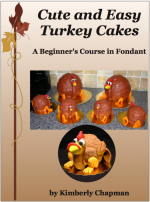You know how easy it is to sit around watching cake shows on TV and then imagine how you’d have done better and ensure your cake would never fall over?
Yeah, about that…
I had a cake fall over yesterday in a large gathering, and it’s completely my own stupid fault. It was a donated cake so it didn’t cost anybody anything, and they weren’t even expecting it so nobody’s heartbroken (except me, and I’m not so much heartbroken as annoyed at myself), and all who consumed it after agreed that it tasted wonderful so that’s a win, at least.
At this point I could crawl off to hide and pretend it never happened, or I could publicly declare exactly how I messed it up so that others may learn from my mistakes. Let’s go with the second option and pretend I’m all mature and stuff.
The cake was donated to my daughter’s school year launch party. It was made to serve 200, so it was comprised of 8 box mixes’ worth of cake plus ridiculous quantities of homemade buttercream and fondant. The school’s logo is a rocket, so I made a rocket perched atop a moon-ish surface, complete with the school’s crest on two sides of the rocket. In the way of excuses, I made it in two days at the end of a week when my husband had been out of town on business. So I was tired and probably took on more than I should have.
Anyway.
Here is the cake standing, which it did for some time before it finally gave way and fell over:

Ace Academy rocket cake, pre-disaster, although you can see the cracks in the lower rocket section.
Here’s a rough diagram of the internal structures:

Tan lines are wooden boards. The burgundy line is a cardboard board. The red vertical lines represent five wooden stakes distributed evenly around that cake. The thick black lines represent PVC pipe and metal flange assemblies screwed into the wooden boards. There is buttercream between all cake layers.
Experienced decorators already see the flaw, but for those who don’t, the problem is I really should have done another PVC and flange assembly in that vanilla cake that only has wooden dowels. I didn’t because the cake was being transported in three sections: the moon and lower rocket part, the middle white rocket part, and the blue tip. I wanted the bottom blue rocket part to taper inward so I didn’t want to stick a big board on it, plus I was tired and lazy and didn’t want to embed screws in yet another of the wooden boards.
While still at home, I tested the white middle and blue tip sitting on the wooden stakes and it was totally fine. It should have been okay assembled that way on-site.
The real problem happened when I was adding the white border strip between the blue tip and the middle white section. I forgot my sugar-shaker, so when I was rolling out the white strip, I couldn’t roll it thin because it was sticking to my work surface. So I applied it thick and pushed it against the cake. But the force of doing this rocked the cake enough that it caused those wooden stakes to tip and rip their way through that cake. I rescued it initially, moving the whole middle and top to the side, but the stakes simply didn’t have enough solid cake left to be stable. I moved them to other parts of the cake, tried to anchor them with gobs of fondant (which you can see in the upper photo), added white stripes to try to cement the fondant cracks closed, and it seemed stable-ish so I put the whole thing back together (albeit without the strip I was going to put on to hide the join between the white middle section and that lower blue rocket). It stood, so I left the room for about 45 minutes.
But by the time I got back, it had fallen over. I don’t have pictures of that but maybe another attendee does. Those wooden stakes simply didn’t have enough holding them upright and at some point the increased heat in the room was too much and it collapsed.
So had I put PVC and flanges in, it absolutely would have held. Had I remembered my sugar shaker and/or been smart enough to put the white strip on between the blue tip and the middle portion with that all to the side, it might never have rocked enough to cause those stakes to tip.
There you have it: multiple mistakes and a cake comes tumbling down!
At least it was tasty…
PS I did do an experiment on this that did work: I spackled the fondant-covered moon with royal icing (that’s not new or original, people have been doing that texture trick for ages), but then wanted it to get a wash and didn’t have time for it to dry and I don’t own an airbrush. So I tried putting a bit of black food colour with a lot of water in a spray bottle and just spritzed the whole thing. Voila, super-fast wash over still-wet royal icing and it totally worked. The whole thing dried to tacky in about an hour, solidly hard overnight.












It looked fantastic before it fell over :). I pointed out to a friend the other day that in any series of things (dance exams, fancy cakes etc) you get (at least) one absolutely free stuff-up pass – no self-recrimination necessary. It's in The Rules.
Extra points on the SUP (stuff-up-pass) if you've been single-parenting, or had a migraine ;p.
Wooden dowels are just evil. I hate them. I had a similar incident in which I had a wedding cake collapse, all because of those stupid dowels. Now I only use the big hollow plastic tube ones.